Read time – 3 minutes
It was one of those rare moments where I had never heard a bad word about Ladakh. I hadn’t even heard a murmur of uncertainty. Instead, I had been met with nothing but glowing praise about the Markha Valley Trek, so I was very much keen to see if it lived up to its reputation.
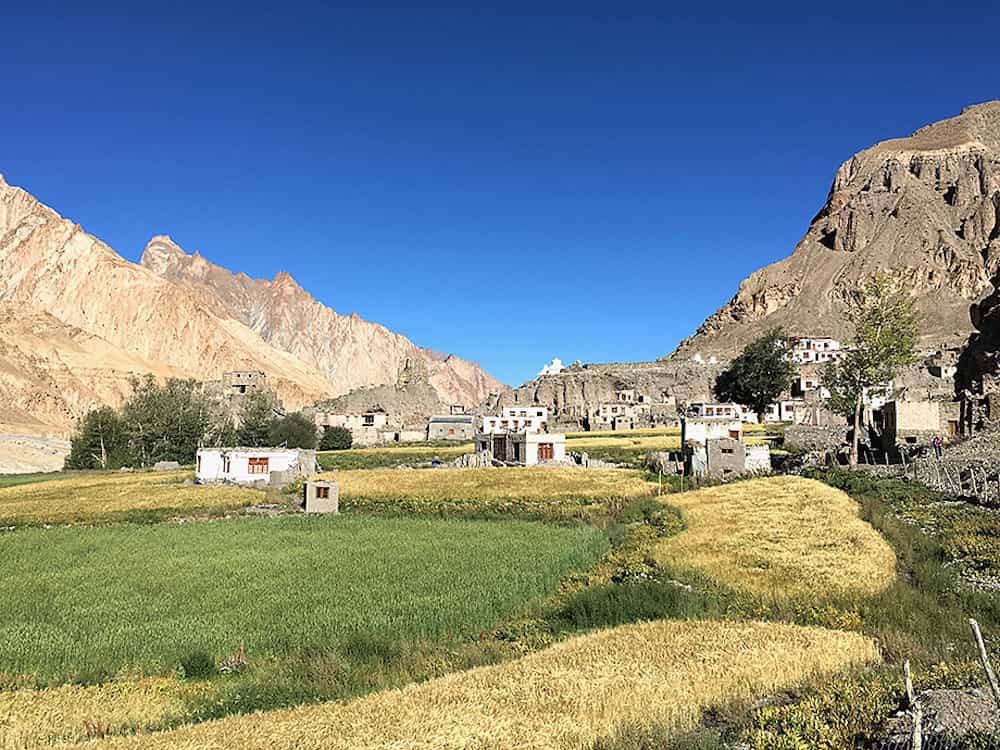 View from Rumbak village
View from Rumbak village Exploring Leh
Arriving from Delhi into Leh, the town had a frontier feel to it. Leh is generally a jumping-off point to the main attraction of the mountains, valleys and canyons overlooking it, but the small town has a friendly charm to it. It’s a refreshing change to be able to wander the streets and markets unopposed, where the population of 130,000 people seem genuinely interested in speaking with you without the regular barrage of sales techniques.
After three days in Leh, acclimatising to the altitude (Leh is 3,500m above sea level) and visiting beautiful ancient Buddhist monasteries, it was time to head off for the main draw of the trip.
 Leh Palace
Leh Palace Camping in the Markha Valley
The Markha Valley trek is a seven-night wild camping trek starting in Jinchen Gorge and finishing in the village of Shang Sumdo. Although it is not a summit trek it does navigate two high passes consisting of first the Ganda La pass at 4970m on the third day of the trek and then the slightly higher Gonmaru La pass at 5266m on the final day.
Personally, I was looking forward to seeing how I would cope with these altitudes and also with the maximum sleeping altitude of 4854m at Nimaling before our final day. I had not previously trekked at these heights (my highest being around the 4400m mark) so I was keen to see how it would affect me.
 Danny in the Marka Valley
Danny in the Marka ValleyThe first couple of days are by no means benign in terms of scenery but onwards from the first pass heading into the sharp, dramatic canyons of the Markha Valley the scenery is truly spectacular. With just the sound of the gently flowing river and the occasional clang from a bell of a passing donkey train, it is very much a tranquil place.
You pass a multitude of stunning rock formations, with stark colours ranging from deep reds and purples, pale yellows to streaks of bright cobalt blue.
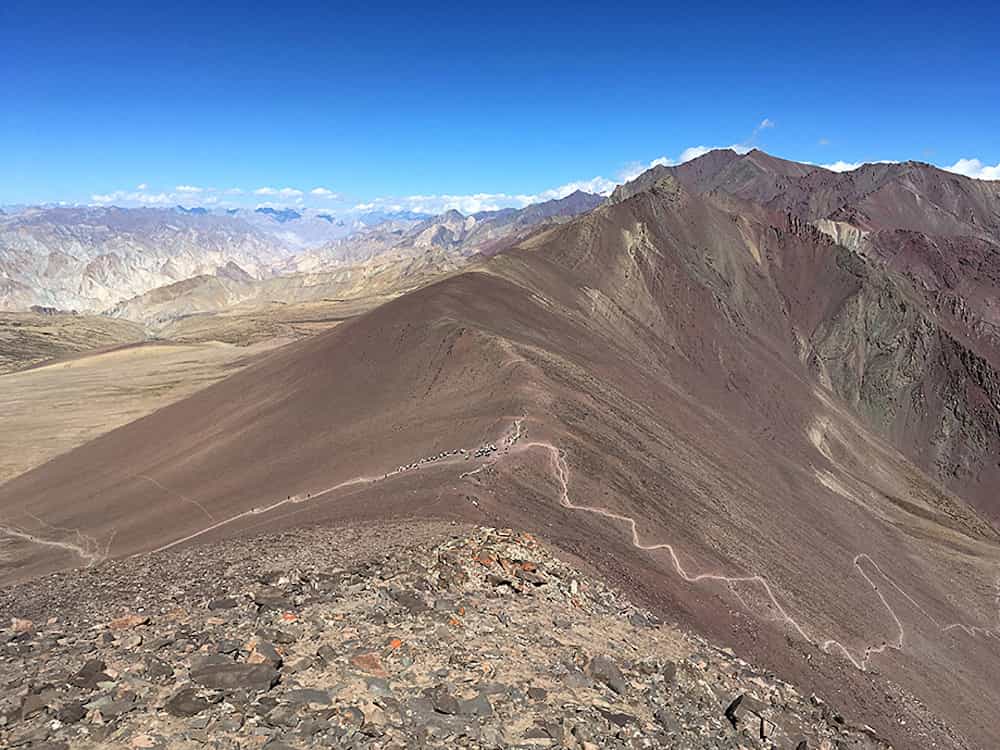 Multi-coloured rocks on the Markha Valley trek
Multi-coloured rocks on the Markha Valley trek The wildlife in the valley is said to be elusive but they must have liked the look of us as every day we seemed to spot the rare mountain blue sheep, not to mention Marmots, mountain hares and yaks.
For the final three days, you can hardly look out over the terrain without spying the movements of little pikas, which resemble a kind of mountain hamster or guinea pig, as they sprint from burrow to burrow.
One campsite in particular made me feel I was on a set of a children’s television program with the intricate streams, lush grass and furry friends popping up to say hello!
 Pika, Markha Valley Trek
Pika, Markha Valley Trek The altitude proved to be less of a problem than we expected. One member of our group struggled but soldiered on with the help of the guides that monitored everyone every step of the way.
For me, the night before the first pass brought on a spell of lack of appetite and headache. However, come the descent into the valley the next day it was nothing but pure enjoyment and clear head including the high pass at the end of the trek.
Having done the Markha Valley trek at the end of the season (beginning of September) I recommend packing for all conditions as like all mountain environments, you never know what is around the corner.
This area at this time of the year is characterised by clear skies with hot days and cold nights, however the morning before the first pass we woke up to snow so plenty of layers and a decent 3/4 season jacket is a must. Also with it being wild camping don’t forget your sense of adventure.
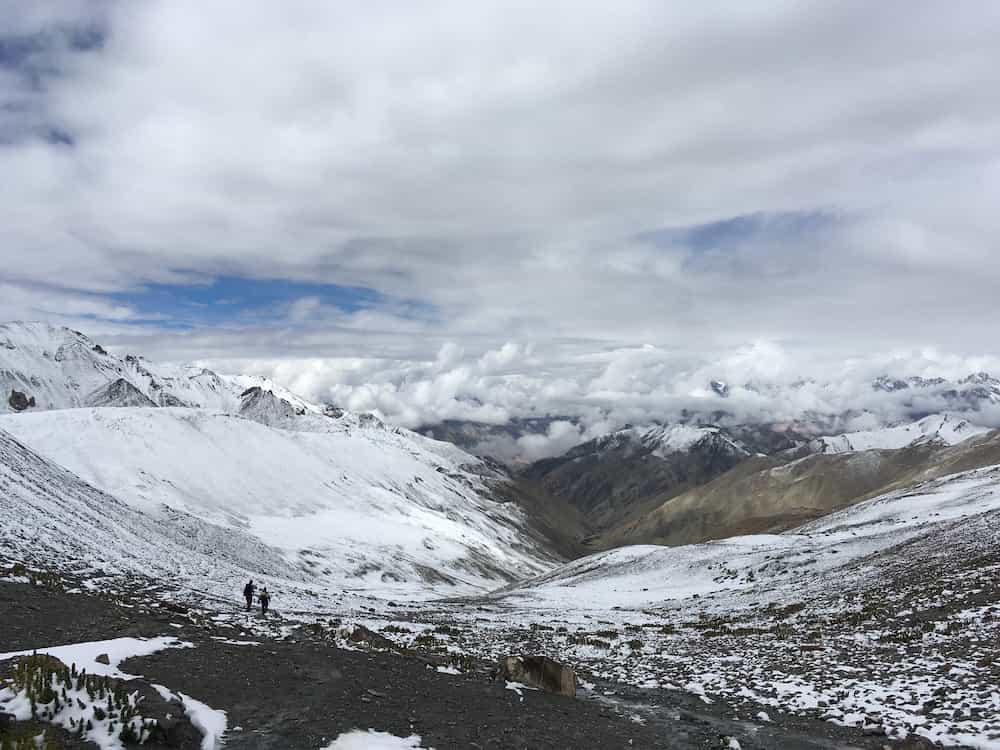 Snow on trek
Snow on trek When I first headed off to Ladakh I was worried it wouldn’t live up to the type. I needn’t have bothered. With the unique stunning scenery, ancient colourful Buddhist Monasteries and warm welcoming remote villages I cannot recommend Ladakh more highly. Come see for yourself, you will not be disappointed.
 View looking down on Gongmaru La Pass
View looking down on Gongmaru La Pass Take a look at the Markha Valley trek in more detail below.

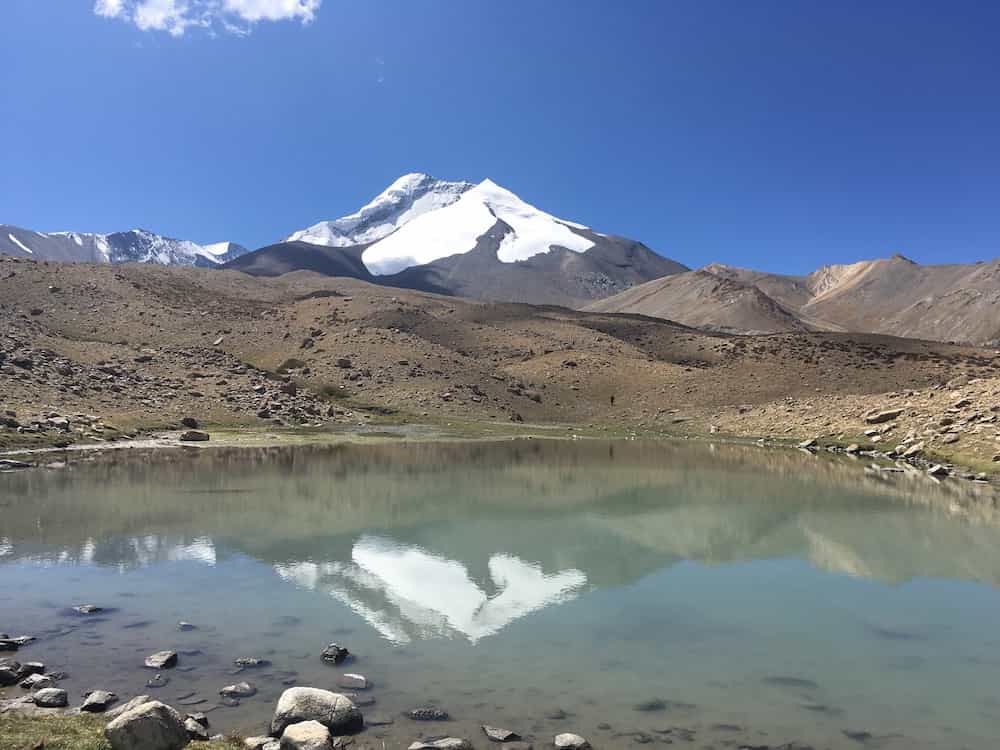 Reflections, Ladakh
Reflections, Ladakh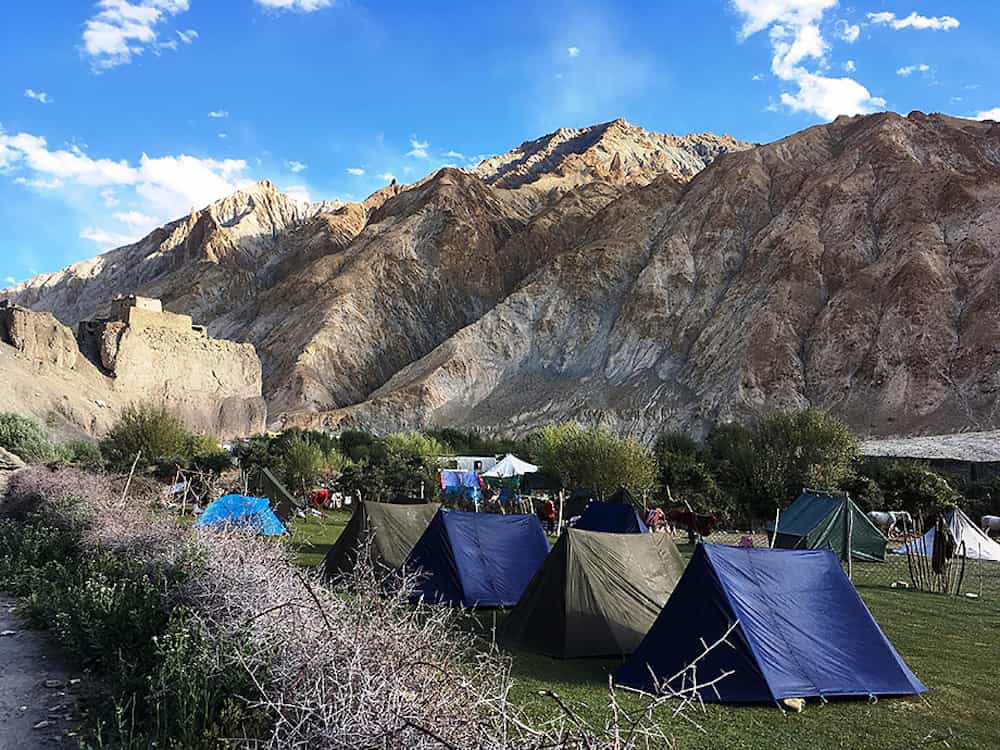 Wild camping in Ladakh
Wild camping in Ladakh


